On Aug. 24, 1991, Ukraine declared itself an independent country.
Then on Dec. 1, 1991, 90.32 percent of Ukrainians voted “yes” to leave the Soviet Union in a referendum, and the next day Poland and Canada were the first countries to recognize Ukraine’s independence. This was not surprising.
Canada’s Ukrainian diaspora had swelled in size and influence since the first settlers arrived in the late 19th Century. And by the time the Iron Curtain fell, a Ukrainian-Canadian lawyer named Ramon Hnatyshyn had become the titular head of state of the country as the Governor General of Canada, appointed by Queen Elizabeth II.
In 1992, he traveled to Kyiv to address the Verkhovna Rada, and emphasized Canada’s commitment to “the new partnership between our two nations.” He then unveiled the first of many aid programs designed to help Ukraine transition to a developed nation and healthy economy. “We must not forget people’s suffering which we are witnessing,” he said.
There was much excitement in Canada during the heady days of newly found freedom from the Kremlin. Thousands of Ukrainian-Canadians headed for Ukraine to visit as well as to buy or start businesses and partnerships. They wanted to provide, for their relatives and friends, the same opportunities that Ukrainians had benefitted from in Canada since the 19th century. And they lobbied their governments to lend a hand. Memories were vivid.
“My grandfather arrived in Canada neither speaking nor writing English and accordingly signed the homestead papers with his mark,” said Hnatyshyn, who died in 2002. “These documents caused me to reflect upon the legacy of my forebears. My grandparents were determined that their children would have the education they were denied.”
Hundreds of large and small government aid programs were sent to Ukraine to reform government and build the economy, but to no avail. Worse, members of the Canadian diaspora followed, rushing enthusiastically to help, but virtually all had their proverbial heads handed back to them by corrupt government apparatchiks and oligarchs. The result was, for the next 27 years, the country has been run into the ground for the benefit of the few at the expense of the many.
Revolutionary election
Two gigantic street protests were stillborn — 2004 and 2014 — as a result of treacherous leadership and odious oligarchs. By 2019, Ukraine was the poorest country in Europe with the richest President and activists were getting murdered with impunity.
Then around the 5th anniversary of the EuroMaidan Revolution, which drove President Viktor Yanukovych from power in 2014, another revolutionary earthquake struck the place. More than 73 percent voted in favor of a newcomer pledging reforms. Newly inaugurated President Volodymyr Zelensky has rolled out pledges and programs that look very promising — but only if a reform-minded parliament, or reform coalition, is elected on July 21. All of which means that the story is not over, but hopefully Ukraine can finally succeed in attaining prosperity and peace, given the country’s assets and hard-working, educated populace.
Big presence in Canada
But the history of Ukraine has been about unfulfilled promise, written in blood for centuries, and the outflow of people has been staggering. Since the 1880s, immigrants began leaving for Canada and arrived in four waves. Today, an estimated four million people in Canada (out of 37 million) can trace some or all of their heritage to Ukraine. This makes the diaspora the biggest outside of Ukraine except for Russia. Their sheer numbers, plus their institutions and organizations, have kept the culture and history alive, but also made them influential and committed to Ukraine’s wellbeing as a political priority.
1st wave: 1891–1914
The first major influx (170,000 rural poor, primarily from Galicia and Bukovina) occurred between 1891 and 1914. They mostly homesteaded in northern Alberta and Saskatchewan up to the First World War in 1914. Many were recruited by the Canadian government to populate and farm in its remote regions in the cold prairies. They lived in hellish conditions.
Unfortunately, during the Great War after 1914 and then until 1920, the Canadian federal government classified all immigrants with German or Austro-Hungarian citizenship as “aliens of enemy nationality” and interned the working age men. About 5,000 Ukrainians were among the Europeans forced to live in camps and worksites under poor conditions. Others interred included Romanians, Slovaks, Czechs, Hungarians, and Poles. But all were released after the Treaty of Versailles was signed.
2nd wave: 1923–1939
The second wave began in 1923 after the Canadian government allowed former subjects of the Austrian Empire to once again enter. Around 70,000 Ukrainians from Poland and Romania arrived between 1924 and September 1939. They were fleeing the Holodomor, and struggle for Ukrainian independence during the Russian Civil War. But there was little farmland available to homestead any longer, so they mostly worked in factories in cities in Ontario and Quebec.
3rd wave: 1945–1952
The third wave arrived after the Second World War between 1945 and 1952 from refugee camps outside Ukraine as displaced persons. About 32,000 were resettled in Toronto, Montreal, and Vancouver where large communities were already established and had founded newspapers and organizations such as the Canadian League for the Liberation of Ukraine. Few came after that, during the Brezhnev and Gorbachev regimes, because exit visas were difficult to obtain.
4th wave: After 1991
A fourth wave arrived after Ukraine’s independence from the Soviet Union in 1991. The country was impoverished and riddled with corruption and unemployment so few were able to immediately leave. But from 2001 to 2016, Canada welcomed 40,015 new permanent residents from Ukraine.
Throughout these decades, the diaspora has remained vibrant and active, publishing nearly 600 newspapers and periodicals; establishing libraries and university departments devoted to Ukrainian studies, culture and language; and bequeathing foundations to help Ukrainians at home and abroad. Families sponsored relatives by the thousands.
The result is a resilient ethnic group. Every September, the Bloor West Village Ukrainian Festival in Toronto — the largest Ukrainian street festival in North America — showcases the music, dance, food, visual arts, and community. Half a million visitors attend each year from across the country and the United States.
In Vegreville, Alberta, a giant sculpture represents the world’s second largest pysanka, or Ukrainian-style Easter egg, and looms three and a half stories high. A government grant funded the egg to commemorate the Ukrainian culture and early settlements east of Edmonton. Nearby is the Ukrainian Cultural Heritage Village where costumed players re-enact the lives of Ukrainian pioneers. The site includes 30 historic buildings, including three churches, and sod huts where most raised their families.
Despite hardship at home and in Canada at first, Ukrainian-Canadians have thrived and punched above their weight by reaching the heights in many endeavors from science to the professions, arts, sports, politics and business.
Outstanding individuals
For instance, the haunting paintings of William Kurulek, inspired by his childhood in Manitoba in the early 20th century, are widely recognized for their moving images, as is the current-day photography of Edward Burtynsky, known for his large-format photos of industrial landscapes.
In politics, Hnatyshyn was the first to become governor general who was not of English nor French background. But four Ukrainian-Canadians have served as premiers of provinces, and dozens possibly hundreds more as members of the parliament, provincial legislation and mayors of major cities. Many Ukrainians have become scientists, physicians, or lawyers and judges in Canada. In 1988, the first Ukrainian-Canadian, the late John Sopinka, was appointed to the Supreme Court of Canada.
In sports, notably hockey, dozens of great Ukrainian-Canadian players have become professionals, but none more successful than “The Greatest” or Wayne Gretzky. In the world of business, Eugene Melnyk straddles the world of business and sports as the former owner of Biovail Pharma and current owner of the Ottawa Senators NHL hockey team. Too many other wealthy, innovative Ukrainian-Canadians have risen to the top in the worlds of oil, finance, energy, among others, to mention them all by name.
And in popular music, few have surpassed the career of Randy Bachman of The Guess Who or Bachman-Turner Overdrive.
Interest and skepticism
Today, Ukrainian-Canadians continue to exert influence and contribute to cultural and philanthropic projects. But all remain skeptical about the future of the “old country.” Little wonder. Many have been burned along the way since “independence.”
However cloudy the future, what’s a certainty is that if Ukraine is finally able to reform its post-Soviet governmental system, eradicate corruption, and impose the rule of law, then many members of this giant diaspora will beat a path back to the place in order to help the country take its place among great European nations. Ukraine remains in their hearts and always will.
Diane Francis is a nonresident senior fellow with the Atlantic Council’s Eurasia Center and an international advisory board member of the Kyiv Post.
You can also highlight the text and press Ctrl + Enter


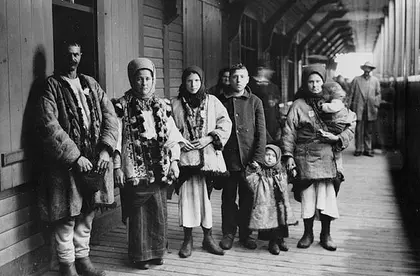
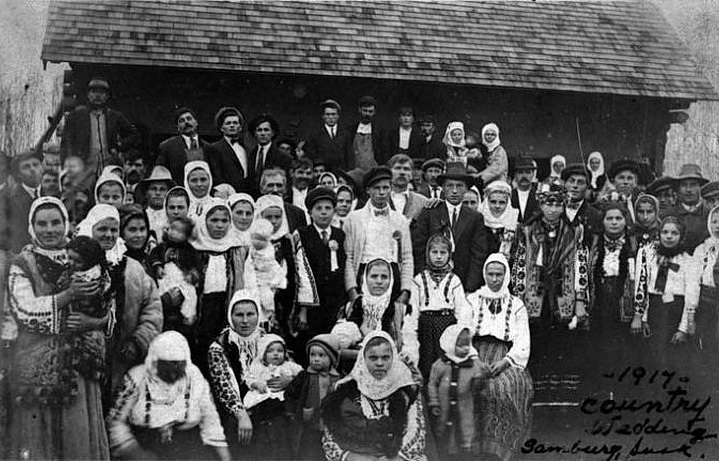
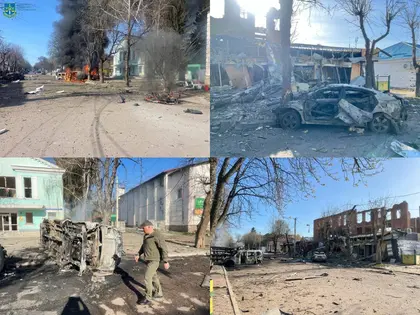
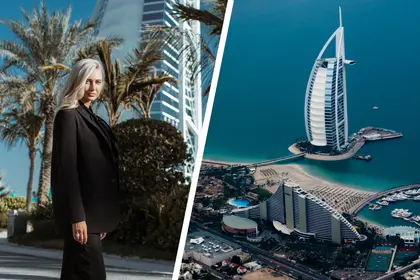
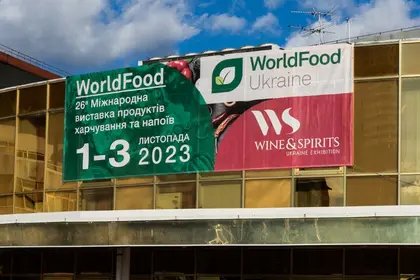
Comments (0)